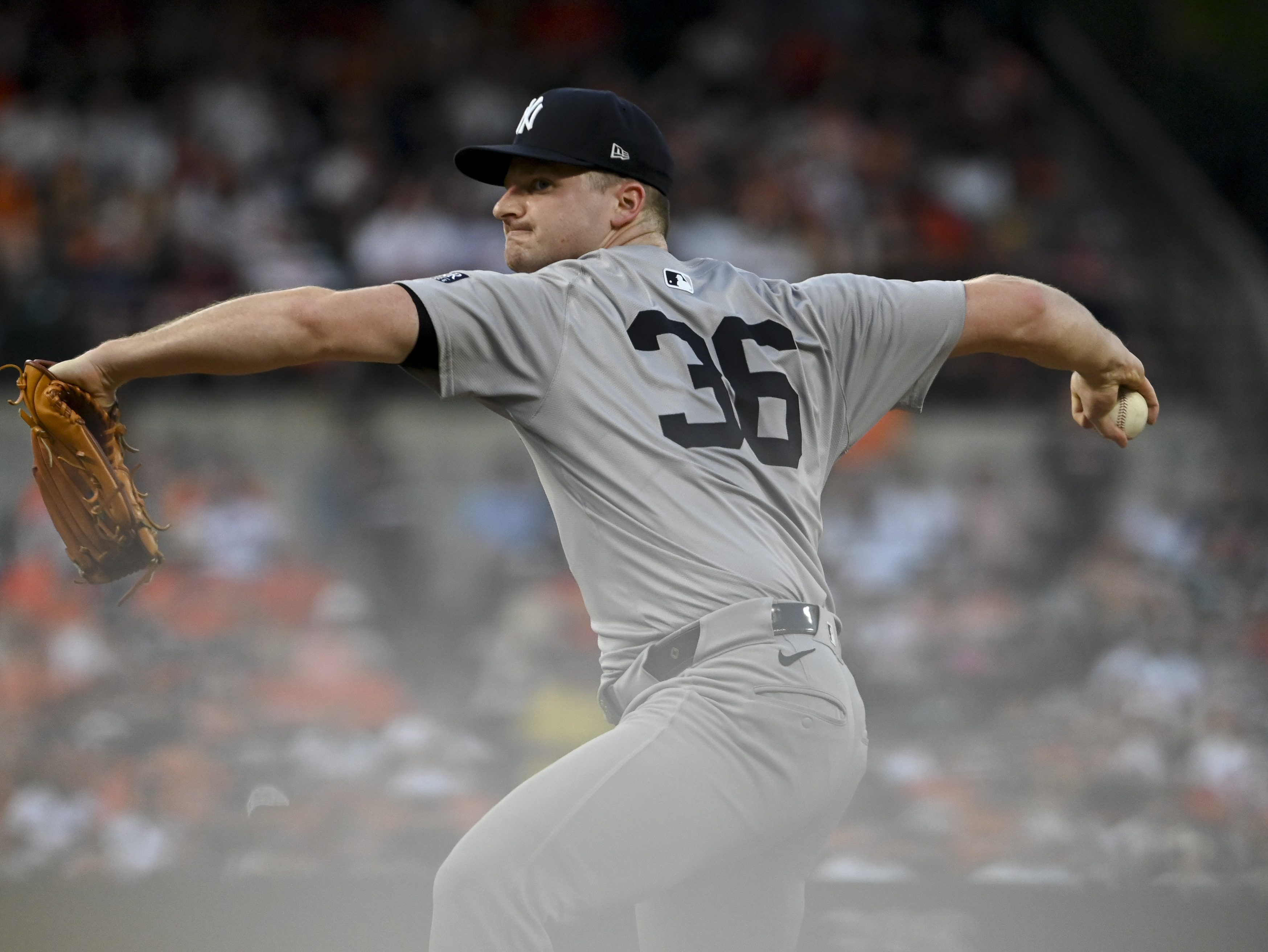
Back in 2023, injuries to the rotation would force the Yankees to make Clarke Schmidt into a starter at the Major League level. Despite the excitement around his brand-new cutter, last season didn’t go as well as people hoped it could for the right-hander, as he struggled to keep the ball in the yard and his strikeout rates plummeted. There was plenty to take away from that first season as a starter, and the offseason would allow Schmidt to hone his craft ahead of a crucial 2024 campaign.
Operating under the pressure of wondering whether the Yankees would trade him or sign his replacement, he put his head down and got to work, and the results of those efforts are shining through right now.
Clarke Schmidt is Finding His Form In the Yankees’ Rotation

The cutter was supposed to be the final pitch that unlocked Clarke Schmidt’s repitoire as his biggest struggles came against left-handed batters. Cutters usually perform well against opposite-handed hitters, but the pitch got rocked early in the season and left Schmidt exposed in those matchups as he couldn’t attack them confidently since he lacked the arsenal to properly do so.
With a 28% Whiff Rate and .319 wOBA against lefties this season, the cutter has been his primary offering in those situations at a 42.4% Usage Rate. The confidence he has in this pitch is improved, but he’s also sequencing much better thanks to the way he’s used his sinker in these situations. Clarke Schmidt developed the cutter so he could stay away from the sinker in these matchups, but it has emerged as an excellent offering in these matchups because of how these two fastballs play off of each other.
Schmidt’s cutter has 9.2 inches of Induced Vertical Break while his sinker has 7.5 inches of Induced Vertical Break, but the difference in horizontal movement is over 12 inches. Left-handed hitters are seeing two pitches with similar velocity ranges that only become meaningfully different in their flight path as they either run towards or tail away from them, creating late swing decisions and plenty of whiffs.
By mixing in both fastballs in these situations, hitters are on the backfoot trying to guess where his firm pitches are going to move horizontally, and it’s why lefties are hitting .205 against them with a combined 30.1% Whiff Rate. This adjustment has vastly improved his splits as lefties went from hitting .303 with a .500 SLG% against Clarke Schmidt to a measly .235 average and .397 SLG%.
The one downside to this has been that Schmidt is still trying to incorporate the sinker against righties, as one would expect a sinker to play better to same-handed hitters, but that hasn’t been the case. Righties are hitting .348 on the cutter and .350 on the sinker, but the massive difference is that Schmidt has only allowed a .391 SLG% against the cutter, whereas the sinker is at a whopping .750.
In a cruel and ironic twist, right-handed batters are presenting somewhat of a challenge for Schmidt, but we’re seeing him finally make adjustments. In his last start against the Rays, he dominated across 6.2 scoreless innings, easily the best start of his career and it matched his longest start ever as well. The sinker usage against right-handed batters was a measly 12.9%, and it performed well as he was able to throw hitters off when he did use it.
His sweeper was his go-to pitch instead, and it’s a much-improved pitch versus last year not just in terms of results, but movement as well. Last season his slider struggled a lot, and that created a lot of issues in regards to his ability to put hitters away and get swings-and-misses. He ranked in the 25th Percentile in Whiff Rate which isn’t going to cut it for a starter who doesn’t have elite-level damage prevention, but the changes he’s made are massive.
The improvements are most notable in the movement profile, as he’s getting more sweep on the pitch which allows it to play even better off of his cutter. Clarke Schmidt can sequence these two pitches off of each other against right-handed batters to keep them guessing as they’re both moving away from them, and hitters who are geared up for a cutter or sweeper could find themselves out in front or late on the pitch if they guess incorrectly in these situations.
Honing in on when to use the sinker-cutter-sweeper based on the matchup has taken Clarke Schmidt to another level, pitching to a 2.95 ERA through his first eight starts. The curveball is still a great weapon he can utilize for whiffs in any situation as well, and the diversity of arsenal has greatly improved over last season. He has three above-average offerings he can mix in reliably in the cutter-sweeper-curveball, with his fastball becoming a fine fourth pitch that sets up the rest of his arsenal.
Clarke Schmidt has more weapons at his disposal, and the changes he made over the winter are paying off. Whether he can sustain this or not remains to be seen, but the Yankees are finally seeing their 2017 first-round pick live up to the potential he had coming out of South Carolina. It’s been a bumpy road, but we might finally get the breakout season that he’s always been capable of.
More must-reads:
- Injury bug bites Orioles again as another starting pitcher lands on IL
- Watch: Giants’ Matt Chapman makes unreal barehanded play to beat Mets
- The '10 or more All-NBA Team selections' quiz
Breaking News
Customize Your Newsletter
 +
+
Get the latest news and rumors, customized to your favorite sports and teams. Emailed daily. Always free!

